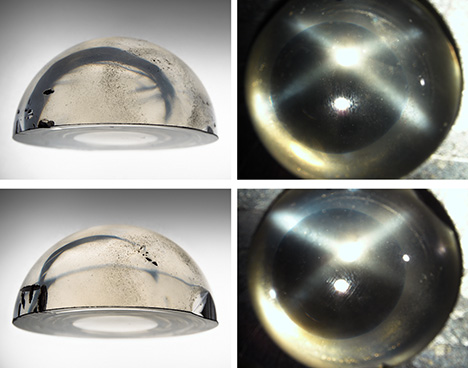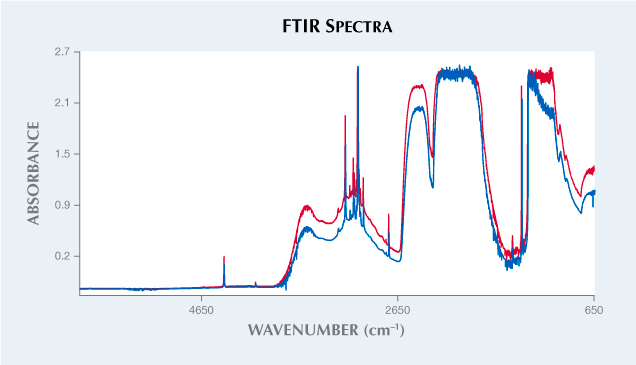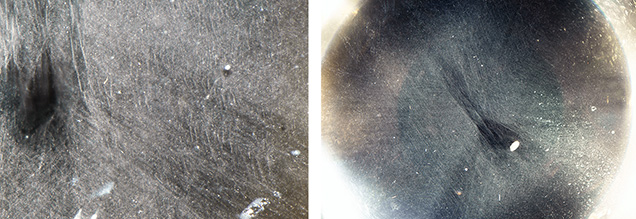Asterism in Natural Diamond Cabochons

The New York laboratory received two cabochon diamonds from Hong Kong, both displaying asterism. Gemologists initially questioned whether these stones were in fact diamond because of the cabochon cutting style and the white four-rayed “stars” observed using fiber-optic illumination. The polished cabochon is a popular cutting style in colored stones but rarely attempted with diamond due to its hardness. This cutting and polishing technique yielded two semitransparent to translucent round cabochon diamonds with a very light yellow color, weighing approximately 6.29 ct and 6.07 ct (figure 1).

Mid-infrared spectroscopy revealed strong hydrogen-related absorption bands (e.g., 3107 cm–1) and those attributed to aggregated nitrogen in the one-phonon region, evidence of natural type Ia diamonds (figure 2). Microscopic observation from the base of the cabochons revealed prevalent clouds distributed throughout the diamonds. The clouds were composed of small whitish pinpoints, and when aligned linearly formed small needle-like internal inclusions (figure 3).

Fluorescence images collected using the DiamondView revealed yellowish green fluorescence in the sectors with clouds. The cloud-free sectors were inert to UV radiation. Symmetrical fluorescence patterns were observed in both stones with nearly mirror images (figure 4).

Natural diamonds are dominated by {111} octahedral growth sectors, but occasionally the {100} cubic sector is well developed, forming a crystal with mixed growth habits. The cubic growth sector could preferentially contain a significant amount of pinpoint cloud inclusions. This feature occurs quite often in diamonds from Zimbabwe. Unlike other diamonds with clouds, these clouds concentrated in the {100} growth sectors linearly aligned to form needle-like inclusions. The distribution of these needle-like inclusions within the {100} growth sectors generated the asterism feature seen in these gem diamonds.
Gemological and spectroscopic features strongly indicated that these diamonds were cut from the same large rough diamond crystal. The crystal was very likely cut through the center along the (100) plane and then polished into two relatively large cabochon diamonds. Taking advantage of the widespread needle-like inclusions in this otherwise well-included large diamond crystal was a clever design choice to produce two cabochons displaying the rare asterism phenomena.
.jpg)


